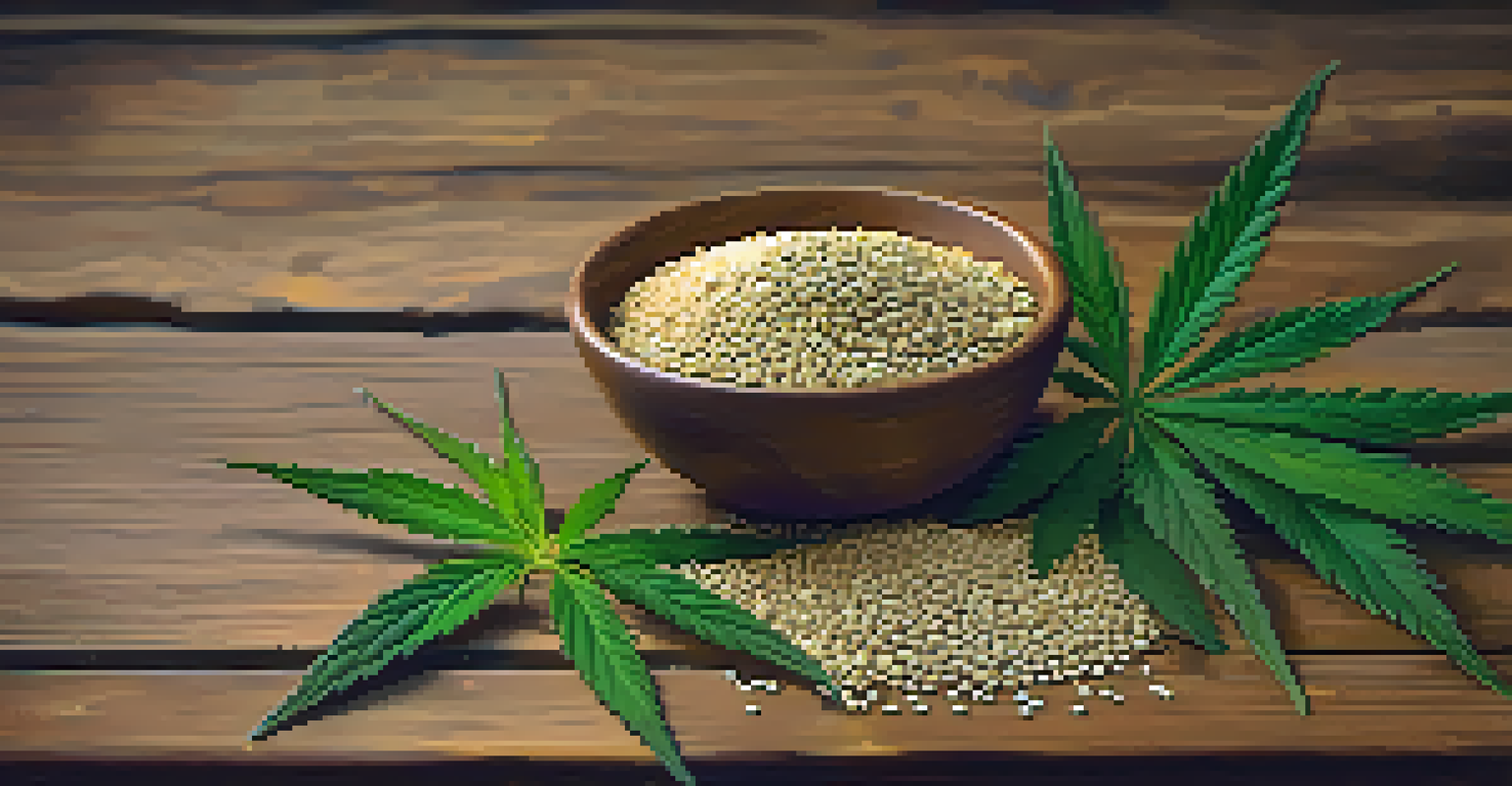Marijuana, Nutrients, and the Endocannabinoid System

What is Marijuana and Its Key Components?
Marijuana, also known as cannabis, is derived from the Cannabis sativa plant. It contains several compounds, the most well-known being cannabinoids, which include THC and CBD. These compounds are responsible for the plant's psychoactive effects and potential therapeutic benefits.
The human body has a natural ability to heal itself, but it needs the right nutrients to do so.
In addition to cannabinoids, marijuana is rich in terpenes and flavonoids, which contribute to its aroma, flavor, and potential health benefits. Terpenes, for example, may enhance the effects of cannabinoids through what is known as the 'entourage effect.' This interplay between compounds makes marijuana a complex plant with diverse properties.
Understanding these components is crucial for anyone exploring the medicinal or recreational use of marijuana. Knowing what you're consuming allows for better-informed choices, whether for wellness or enjoyment.
The Role of Nutrients in Cannabis Growth
Just like any other plant, marijuana requires specific nutrients for optimal growth. Key nutrients include nitrogen, phosphorus, and potassium, which are essential for plant health. Additionally, secondary nutrients like calcium and magnesium play a critical role in developing strong roots and foliage.

Nutrient deficiencies can lead to stunted growth and poor yields. For example, a lack of nitrogen can cause yellowing leaves, while insufficient phosphorus can lead to weak root systems. Therefore, cultivating healthy cannabis plants involves not just the right conditions but also a well-balanced nutrient regimen.
Marijuana's Key Components Explained
Understanding the cannabinoids, terpenes, and flavonoids in marijuana is essential for making informed choices about its use.
Growers often utilize nutrient-rich fertilizers or organic amendments to ensure their plants receive what they need. By understanding the nutrient requirements, cultivators can enhance the quality and potency of their cannabis.
Introduction to the Endocannabinoid System
The endocannabinoid system (ECS) is a complex cell-signaling system found in all mammals. It plays a crucial role in maintaining homeostasis, or balance, in the body. This system consists of endocannabinoids, receptors, and enzymes that work together to regulate various functions such as mood, appetite, and immune response.
Cannabis is not just a plant; it's a tool for wellness that can help us find balance in our lives.
Two primary types of receptors, CB1 and CB2, are found throughout the body, with CB1 primarily located in the brain and central nervous system, while CB2 is mostly associated with the immune system. When cannabinoids from marijuana interact with these receptors, they can influence a wide range of physiological processes.
Understanding the ECS is essential for grasping how marijuana affects the body. It highlights the potential therapeutic applications of cannabinoids and how they can be harnessed for various health benefits.
How Marijuana Interacts with the ECS
When consumed, cannabinoids such as THC and CBD bind to the ECS receptors, mimicking the body's natural endocannabinoids. This interaction can lead to various effects, from pain relief to mood enhancement. For example, THC is known for its psychoactive properties, while CBD is often praised for its calming effects without the high.
The way these cannabinoids interact with the ECS can vary based on individual factors, including genetics, overall health, and even the specific strain of marijuana used. This individuality is why some people may find relief from certain symptoms while others may not experience the same effects.
Nutrients Boost Cannabis Growth
Proper nutrients like nitrogen and phosphorus are critical for cultivating healthy cannabis plants and improving their potency.
By understanding this interaction, users can better tailor their cannabis consumption to meet their specific needs, whether for medicinal or recreational purposes.
The Nutritional Value of Marijuana
While marijuana is often recognized for its psychoactive properties, it also boasts a range of nutritional benefits. The plant is rich in essential fatty acids, vitamins, and minerals. For instance, hemp seeds, derived from the cannabis plant, are a fantastic source of protein, omega-3, and omega-6 fatty acids, making them a great addition to a balanced diet.
Moreover, the nutrients found in cannabis can support overall health, including promoting heart health and reducing inflammation. These benefits extend beyond just the psychoactive aspects of marijuana, highlighting its potential as a superfood in certain forms.
Incorporating marijuana or its derivatives, like hemp seeds and oils, into your diet can contribute positively to your nutritional intake. This expands the conversation around cannabis from merely a recreational substance to a potential health ally.
Potential Health Benefits of Combining Nutrients and Cannabis
Combining cannabis with the right nutrients can enhance its therapeutic effects. For example, certain vitamins and minerals may work synergistically with cannabinoids to promote overall wellness. Studies have shown that nutrients like magnesium can support the ECS's function, thereby potentially enhancing the effects of cannabis.
Additionally, a well-rounded diet rich in antioxidants and healthy fats may improve how the body processes cannabinoids. This means that the right dietary choices can amplify the benefits of marijuana, whether for pain management, anxiety relief, or other health concerns.
ECS and Cannabis Interaction
The endocannabinoid system plays a vital role in how cannabinoids affect the body, influencing various physiological processes.
This holistic approach to health encourages users to consider not just the cannabis they consume but also the overall nutritional landscape of their diets. By doing so, they can optimize their health and well-being.
Conclusion: The Interconnectedness of Marijuana, Nutrients, and Health
In conclusion, understanding the interplay between marijuana, nutrients, and the endocannabinoid system can empower individuals to make informed choices about their health. This interconnectedness highlights the importance of a balanced diet and the potential benefits of cannabis as a therapeutic tool.
As research continues to evolve, so too will our understanding of how these elements work together to support health and wellness. The future of cannabis and nutrition is bright, with the potential for innovative approaches to treatment and self-care.

Ultimately, whether for recreational use or health benefits, embracing the relationship between marijuana, nutrients, and the ECS can lead to a more holistic and informed perspective on wellness.